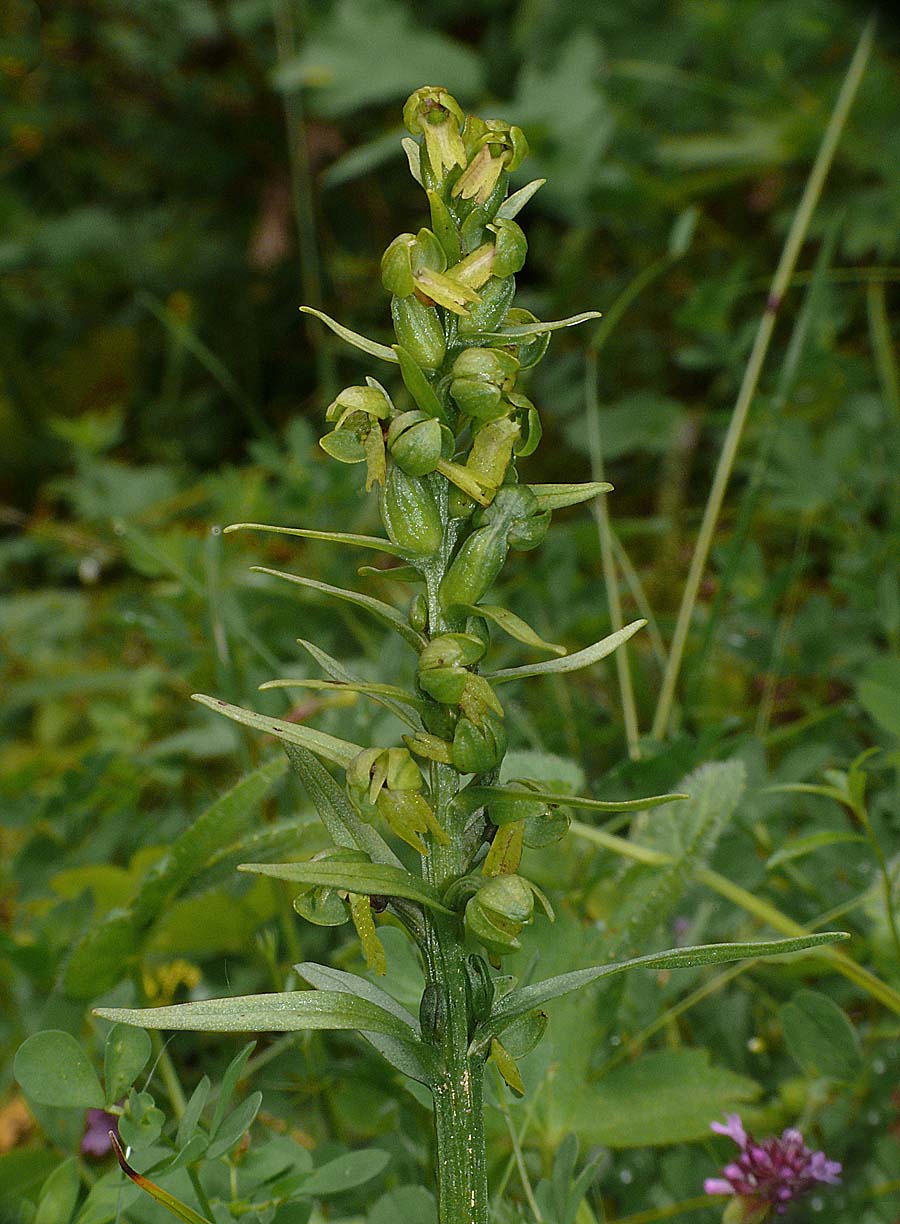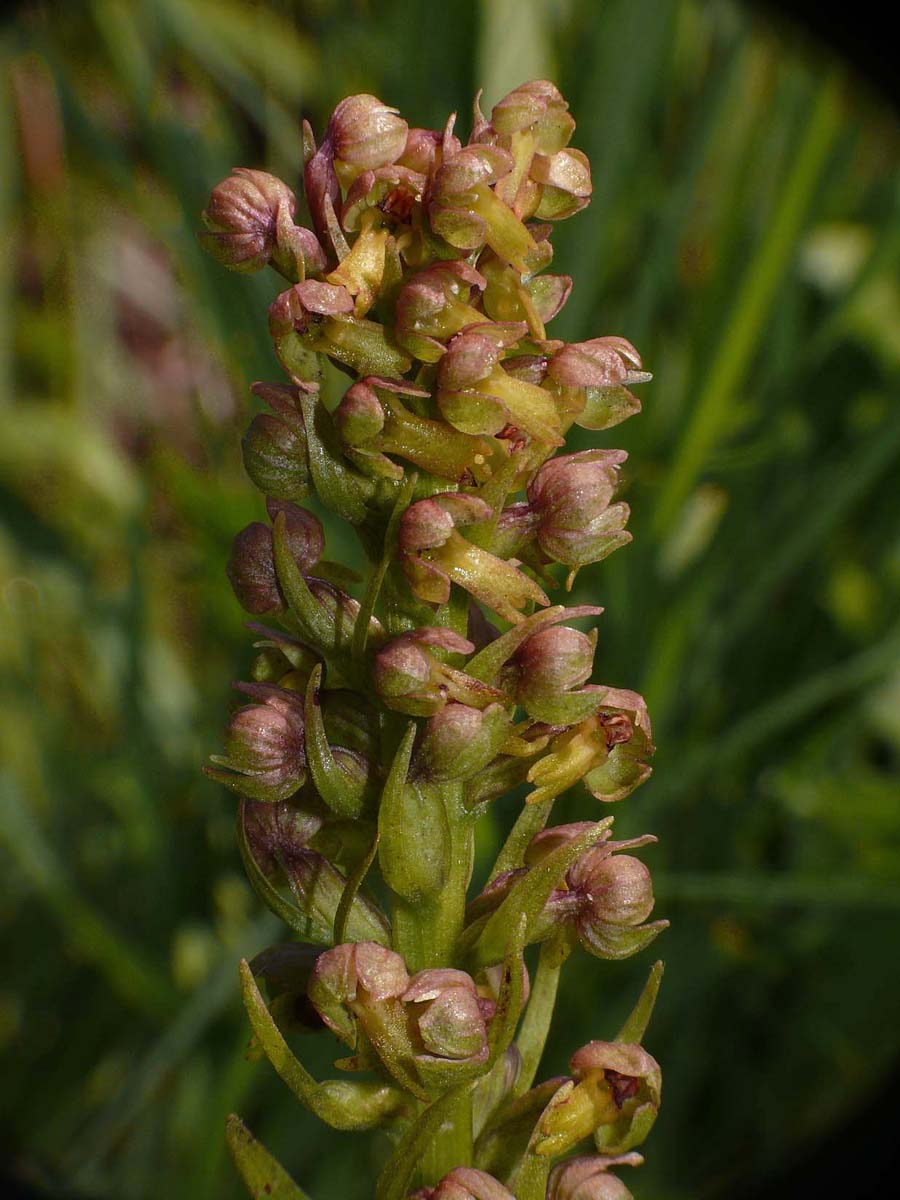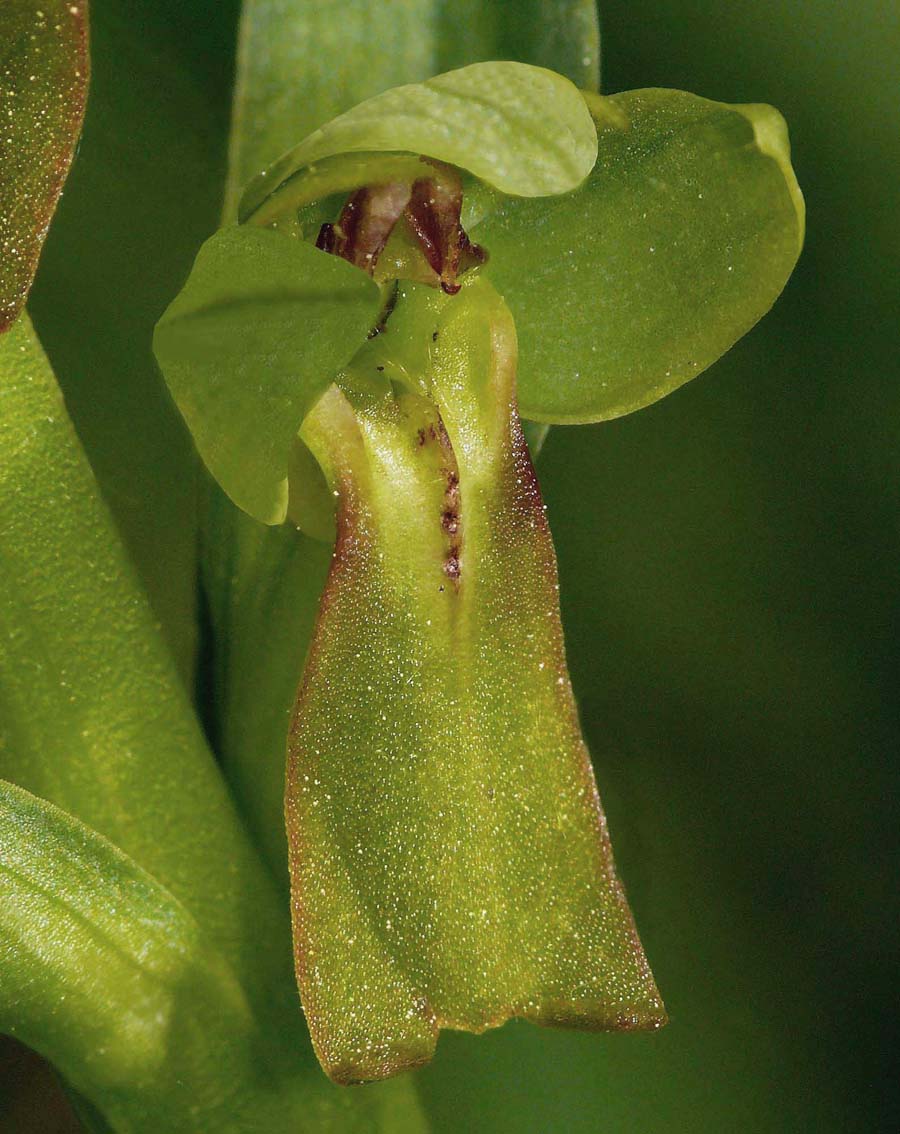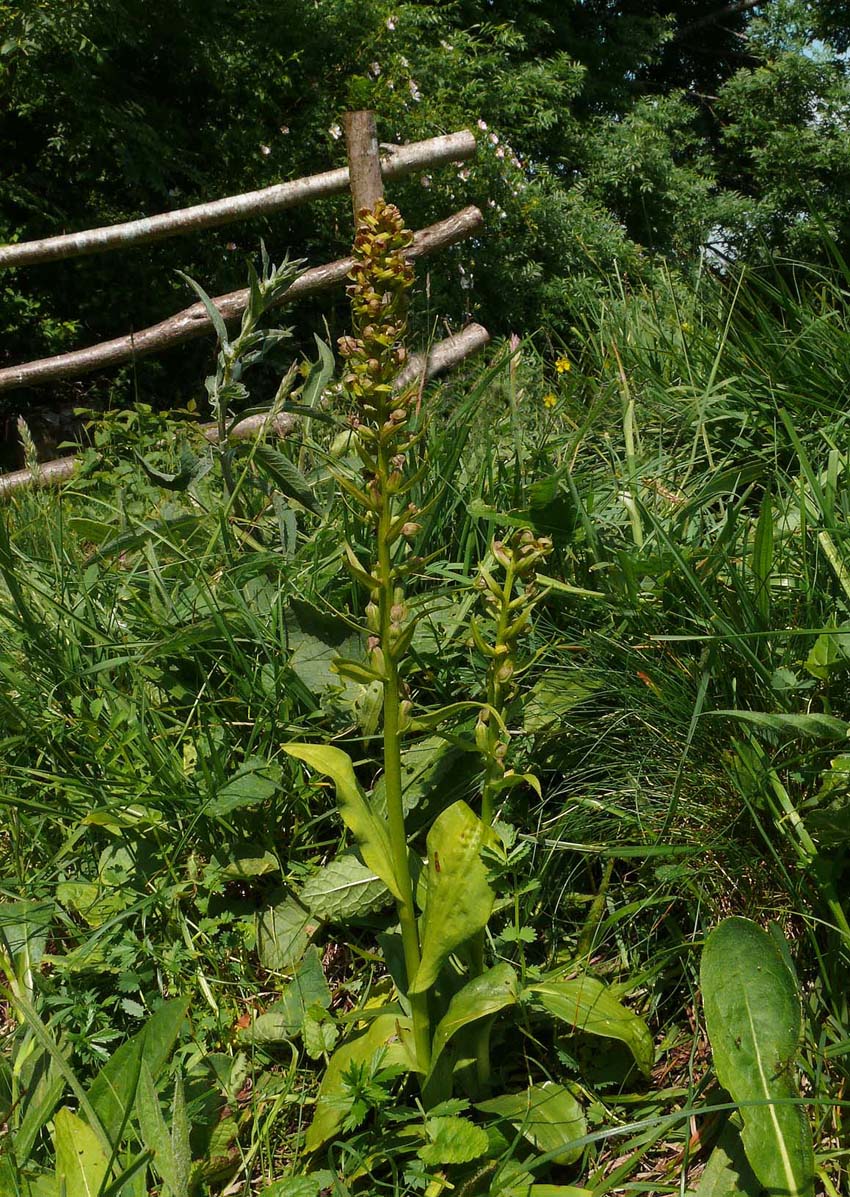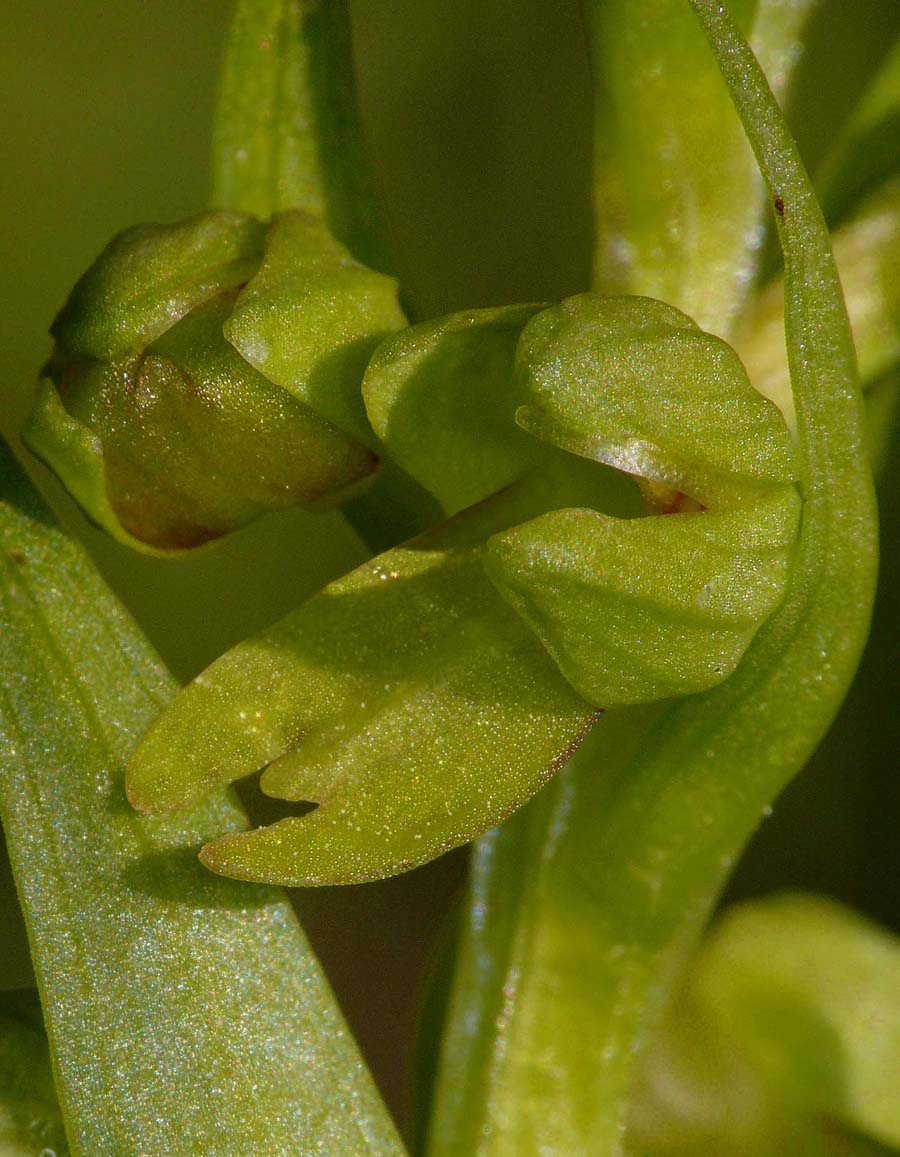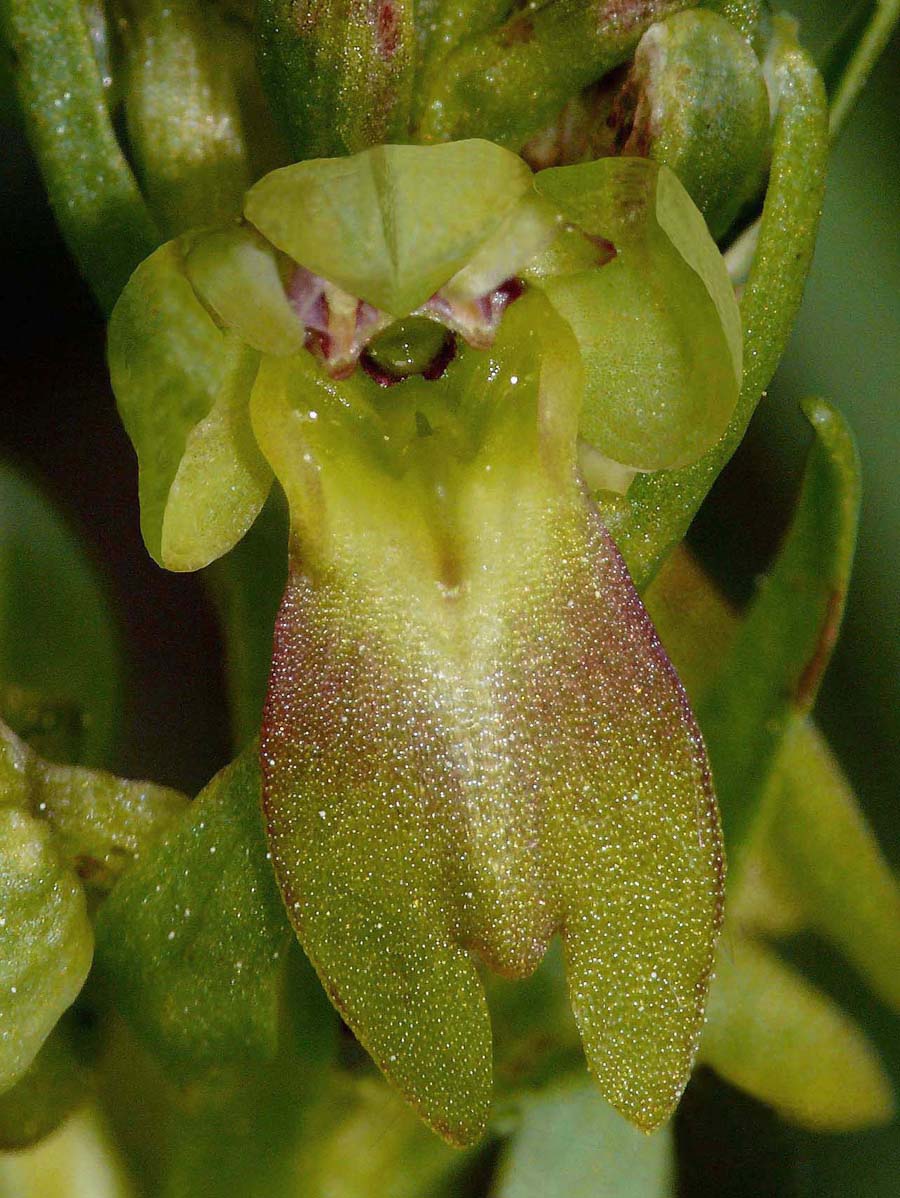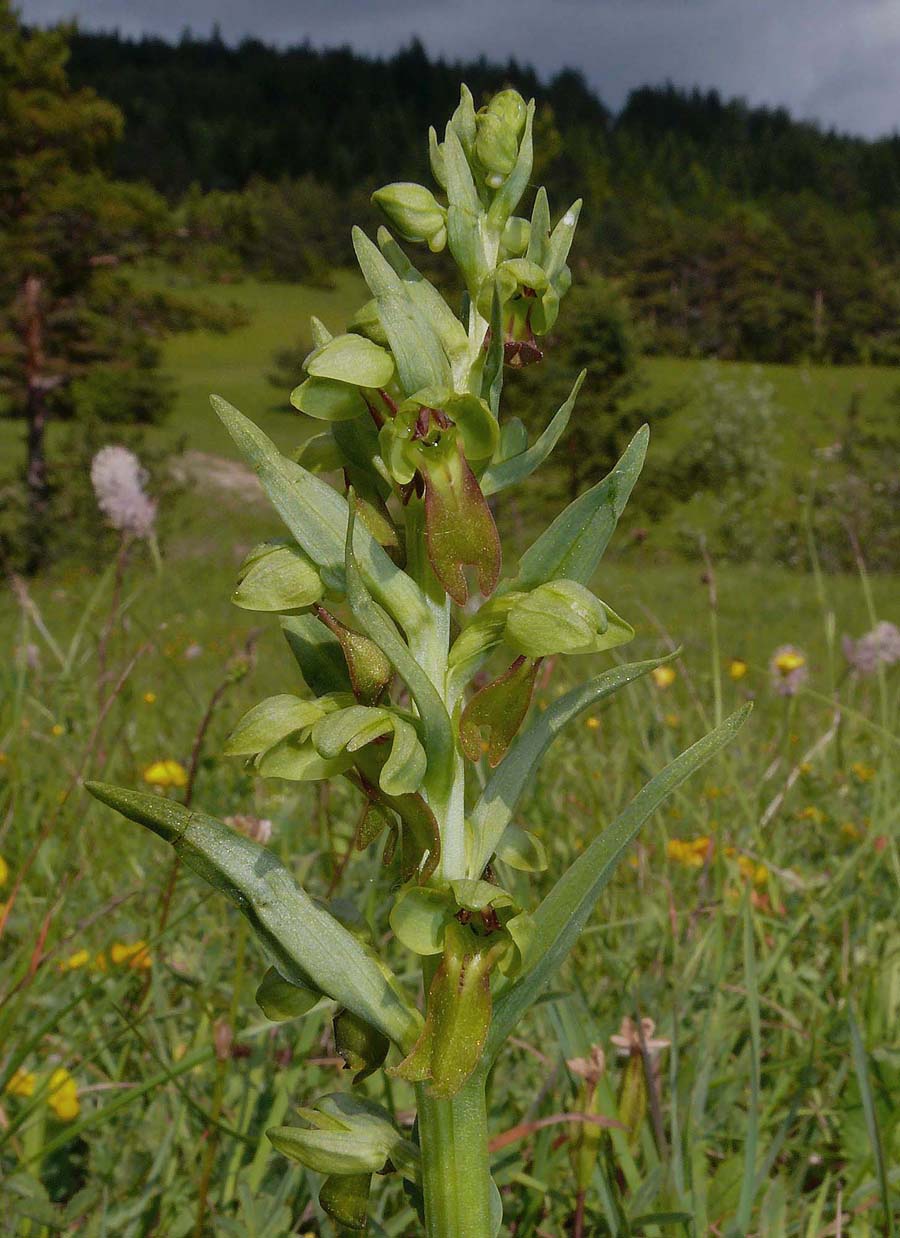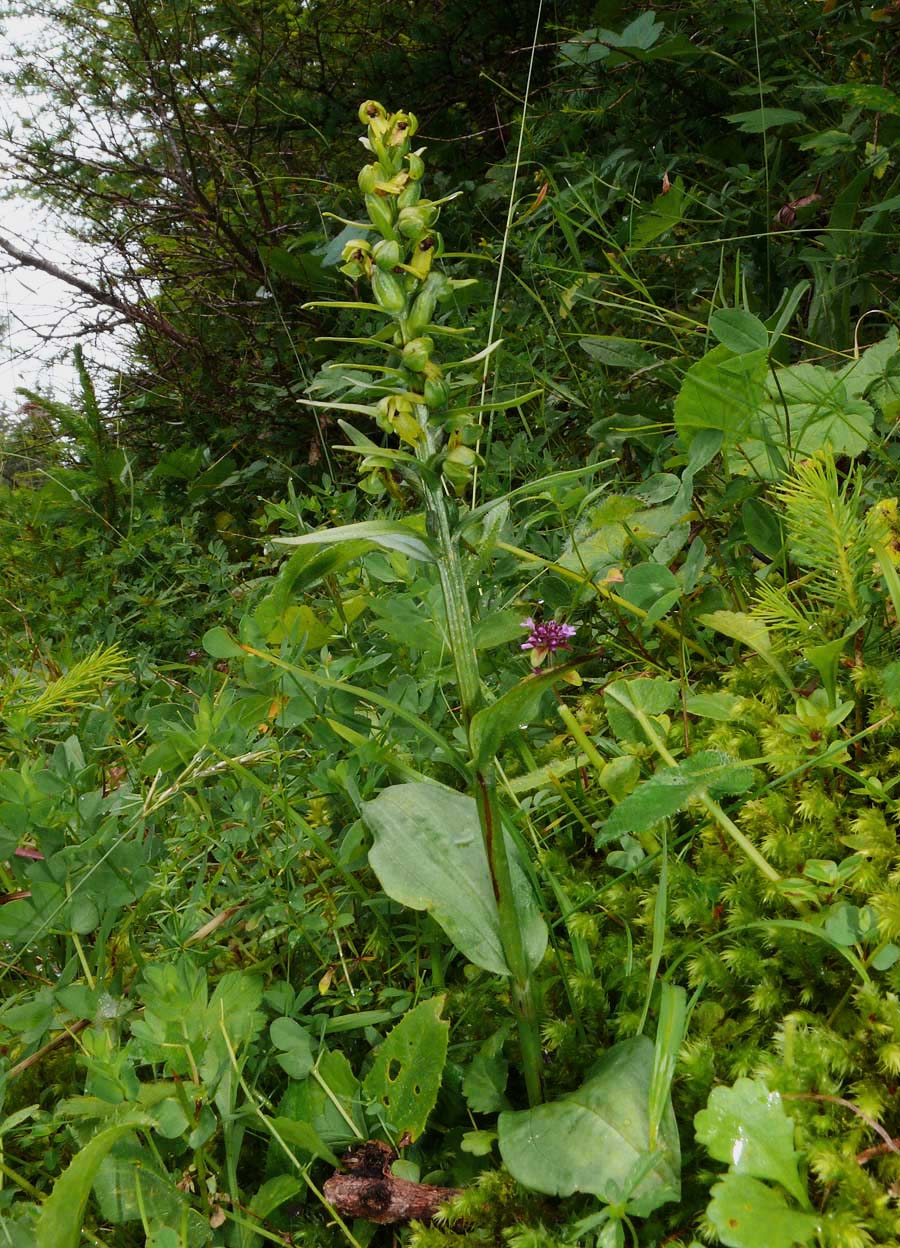D. viridis itself was first described by Hartman from Koenigsberg, Germany
in 1753 and its name refers to the overall dull green appearance of the
plant. Until recently this species was the single European member of the genus Coeloglossum
but recent molecular analysis determined that the species is more correctly positioned within the genus Dactylorhiza.
D. viridis is a widespread but highly localised orchid with a circumboreal distribution throughout most of Europe, though nowhere is it particularly common. Its choice of habitat is extremely varied and the species can be found in dry or wet conditions, in full sun or shade and on alkaline or acid substrates. Although it may occur at high altitudes throughout its distribution, in the south of it is range it is virtually confined to montane grasslands and light woodland. D. viridis can tolerate altitudes up to nearly 3000 metres and is perfectly at home growing alongside more specialized Alpine plants such as the Vanilla Orchids .
This species cannot be described as a beauty and despite a degree of variability, the taxon is unlikely to be confused with any other. D. viridis is a predominantly green plant with flowers that can be similarly coloured or exhibit shades of brown, red or olive. Several variants have been described but these are of little evolutionary importance. The most easily recognized of the named variants is longibracteatum which as its name suggests, possesses lengthy bracts, is taller, sturdier and has much larger leaves than var viridis. Its precise status and distribution is not known with any certainty but it seems to occur more regularly at higher altitudes and is quite commonly encountered in the Alps, in the UK it occurs very sporadically in Scotland and the north of England, particularly Cumbria. The pictures come from Austria and Cumbria, England dating from the first two weeks of July.
D. viridis is a widespread but highly localised orchid with a circumboreal distribution throughout most of Europe, though nowhere is it particularly common. Its choice of habitat is extremely varied and the species can be found in dry or wet conditions, in full sun or shade and on alkaline or acid substrates. Although it may occur at high altitudes throughout its distribution, in the south of it is range it is virtually confined to montane grasslands and light woodland. D. viridis can tolerate altitudes up to nearly 3000 metres and is perfectly at home growing alongside more specialized Alpine plants such as the Vanilla Orchids .
This species cannot be described as a beauty and despite a degree of variability, the taxon is unlikely to be confused with any other. D. viridis is a predominantly green plant with flowers that can be similarly coloured or exhibit shades of brown, red or olive. Several variants have been described but these are of little evolutionary importance. The most easily recognized of the named variants is longibracteatum which as its name suggests, possesses lengthy bracts, is taller, sturdier and has much larger leaves than var viridis. Its precise status and distribution is not known with any certainty but it seems to occur more regularly at higher altitudes and is quite commonly encountered in the Alps, in the UK it occurs very sporadically in Scotland and the north of England, particularly Cumbria. The pictures come from Austria and Cumbria, England dating from the first two weeks of July.
